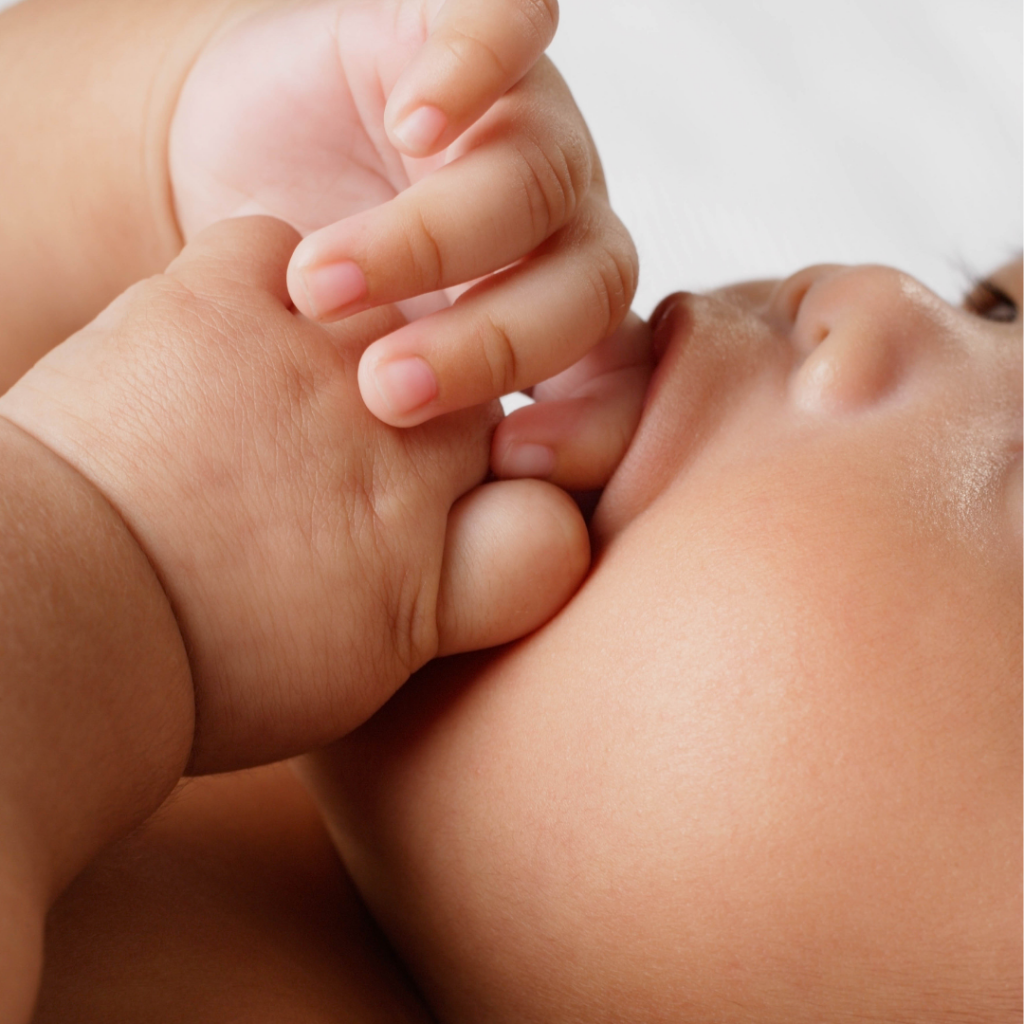Newborn babies have reflexes which help to support their survival. And like adult reflex behaviours, these are not in the baby’s conscious control and are automatic. Some reflexes are more obvious than others, for example, crying and sucking; others are more subtle.
Most reflexes disappear as the baby grows and their nervous system matures. Often the ‘primitive’ reflexes need to disappear before new skills and abilities can develop.

What exactly are reflexes?
Reflexes are involuntary movements. Some reflexes are spontaneous and happen when the baby is moving normally. Other reflexes are responses to certain stimulation. Reflexes are one way to assess if a baby is developing well and their nervous system is maturing as it needs to. Most healthcare providers check reflexes to determine if the baby’s brain and nervous system are working normally.
Many newborn reflexes disappear by around three months of age. However, some reflexes continue through to adulthood.
Although babies are born with a lot of reflexes, the following are the ones which are most commonly assessed and looked for.
Rooting reflex
This is also called the ‘searching’ reflex because it causes the baby to search for the nipple to feed. When the corner of a baby’s mouth is gently stroked, they will turn their head in the same direction. The rooting reflex is also a feeding cue, because it gives the signal that the baby is hungry and looking to feed.
Sucking reflex
The sucking reflex and rooting reflex are both related to feeding. The sucking reflex happens as the roof of the baby’s mouth is stimulated. This is an important reflex which matures between 32-36 weeks of gestation. Very premature babies may not have had the opportunity for their sucking reflex to mature and often need feeding support. Some babies are born with a very strong sucking reflex and attach and suck strongly on the breast, their own fingers or hands.
Tonic neck reflex
The tonic neck reflex can be seen as the baby’s head is turned to one side, the arm on that same side will extend and their hand open. The arm on the other side will bend and come up to the baby’s face with their hand tightly clenched. This is also called the ‘fencing’ reflex. This reflex is a very early bridge to helping develop hand-eye coordination.
Babinski reflex
As you stroke the bottom of your baby’s foot from their heel up to their toes, you’ll see their big toe move up. As it does, their other four toes will separate and fan out.
Grasping reflex
You can see your baby’s grasp reflex if you place a finger into the palm of their hand and they automatically grasp it and hold on tightly . The grasp reflex is thought to have been generated from our ancestral origins. Baby primates need to be able to grasp onto their mother’s hairy back to stop them falling onto the forest floor and be harmed by predators. The grasp reflex is one of the longest reflexes to disappear and can be present for up to six months of age.
Moro or startle reflex
The Moro or startle reflex makes the baby cry or startle, throw back their head, fling their arms away from their body and then quickly bring their arms and legs back to their middle. Essentially, the baby feels as if they are falling and the Moro reflex is a sign that they feel unsafe.
The stepping reflex
This is also called the ‘walking’ reflex. If the baby is held upright and their feet are in contact with a surface, they will take little steps forward. This is a cute little reflex which generally disappears by around two months.
How will I know if my baby’s reflexes are normal?
After your baby is born, they will be examined by a midwife or paediatrician. If they have any concerns, they’ll discuss these with you and recommend further investigations and/or follow-up. If you notice your baby is still retaining their reflexes by the time they’re a few months of age, have them checked. Sometimes referral to an occupational therapist and/or physiotherapist is needed to support development.
Written for Infacol by Jane Barry, Midwife and Child Health Nurse, October 2022.



